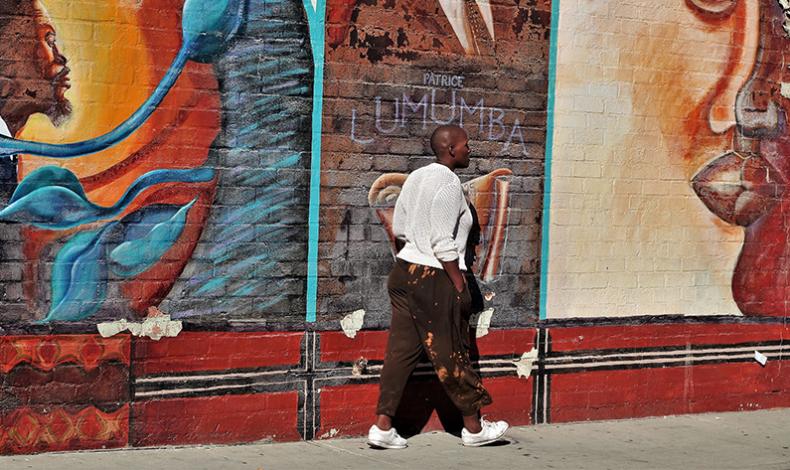Making Preservation More Equitable

The Black Lives Matter protests in the wake of George Floyd’s killing in Minneapolis this summer prompted institutions across the U.S. to reflect on how their work benefits from structural racism and contributes to it. In some fields focused on the built environment, like historic preservation, a reckoning over racial equity has been underway for much longer.
The Black Lives Matter protests in the wake of George Floyd’s killing in Minneapolis this summer prompted institutions across the U.S. to reflect on how their work benefits from structural racism and contributes to it. In some fields focused on the built environment, like historic preservation, a reckoning over racial equity has been underway for much longer.
This fall, the National Trust for Historic Preservation released a report, Preserving African American Places: Growing Preservation’s Potential as a Path for Equity, which seeks to reframe the work of historic preservation as part of a larger struggle for social justice. The report was released through the African American Cultural Heritage Action Fund, which launched in 2017 with the goal of preserving more sites with significance to Black history. It explores the ways that historic preservation can be used to promote equity in historically Black neighborhoods facing the pressures of gentrification and displacement. Weitzman alum Di Gao (MSHP’14), senior director for research and development at the National Trust and lead author of the report, says many practitioners are working to change the perception—often an accurate one—that historic preservation has been used to make wealthy, white neighborhoods even more racially exclusive, while ignoring historic sites in Black communities.
“The preservation movement is not a monolith, and I wouldn’t say that there is great consensus in this area, but there have been increasing calls for changes in the preservation field to better address the issues that communities are facing every day,” Gao says. “We’ve been talking about this for decades.”
The new report was in the works well before this summer, but the events of this year have made it more timely. Its goals and format changed several times from when it was conceived until it was published. In its final form, the report includes a discussion of the historic forces that have shaped urban neighborhoods in unequal ways, like redlining, racially restrictive zoning, and the destructive legacy of urban renewal. Too often, preservationists have considered the architectural or historic qualities of certain sites in a vacuum, without regard for the larger forces of neighborhood development and exclusion, Gao says. Historic designation criteria can be over-reliant on written records, while the significance of sites in some historically African-American neighborhoods may not be extensively recorded but could be drawn out through oral histories, for example. Preservation criteria have also prized architectural integrity and uniformity of historic districts, both of which can be compromised by disinvestment and demolition, which are much likelier in Black neighborhoods, as the report demonstrates.
“We want to challenge the field—and many people are already doing this—to raise these different questions, explore their implications, acknowledge the impacts of our current practice, whether positive or negative, and contextualize what we’re doing in this broader history,” Gao says.
Randall Mason, an associate professor in the Graduate Program in Historic Preservation, served as an advisor for the report. The introduction was written by Brent Leggs, executive director of the African American Cultural Heritage Action Fund and an adjunct associate professor of historic preservation at the Weitzman School. Mason and Leggs have also joined forces to launch the Center for the Preservation of Civil Rights Sites (CPCRS) at the Weitzman School, which was announced in October. CPCRS grew out of a partnership between the Weitzman School and the The Robert R. Taylor School of Architecture and Construction Science at Tuskegee University, announced earlier this year, which is focused on sites with significance to the Civil Rights Movement in Alabama. CPCRS is focused on the preservation of Black heritage and civil rights sites across the U.S. Mason serves as the Center’s faculty director and Leggs serves as a senior advisor.
In his introduction to the National Trust report, Leggs wrote that the purpose of preservation is to help society manage change, not to stop it in its tracks.
“To keep our cities equitable, accessible and prosperous, with opportunities for all, we must work to reuse older buildings to create more jobs and walkable neighborhoods, supporting more minority- and women-owned businesses and addressing urban issues of affordability and displacement—issues that disproportionately impact African Americans,” Leggs wrote. “In short, cities need old buildings and new solutions for revitalization.”
One goal of the report is to explore how preservation practices can be paired with other policies to promote equitable development goals alongside preservation values. As cities across the U.S. face shortages of affordable housing, for example, preservationists can play a role in helping to rehab buildings that contribute to a sense of historic continuity while also providing housing that is lower in cost than new construction, Gao says. She hopes the report is read by “people who currently do not see a link between preservation and the responsibility of advancing equity and social justice.”
“There’s a reluctance to wade into these issues, because it is so highly contested,” Gao says. “But that is why we need more informed resources on these matters. It’s too important.”

